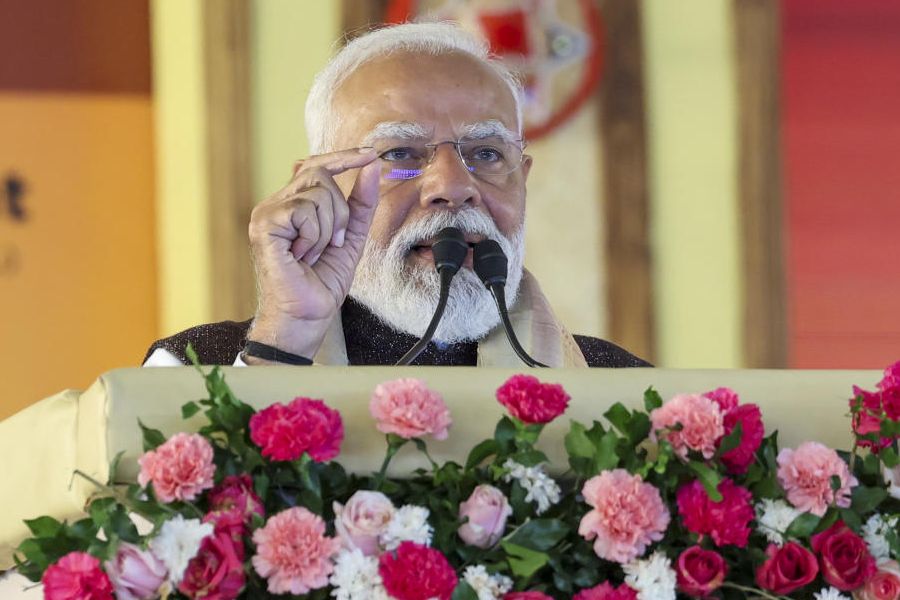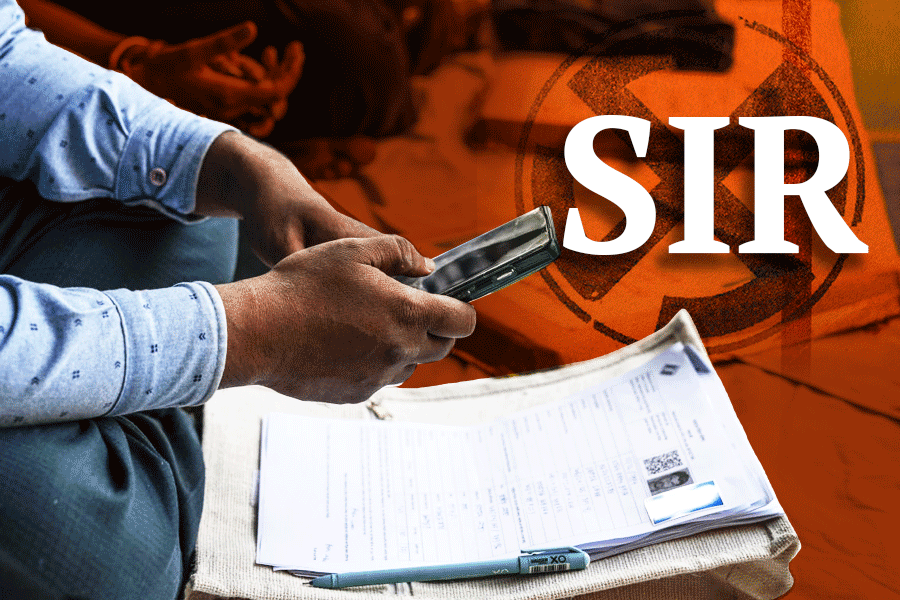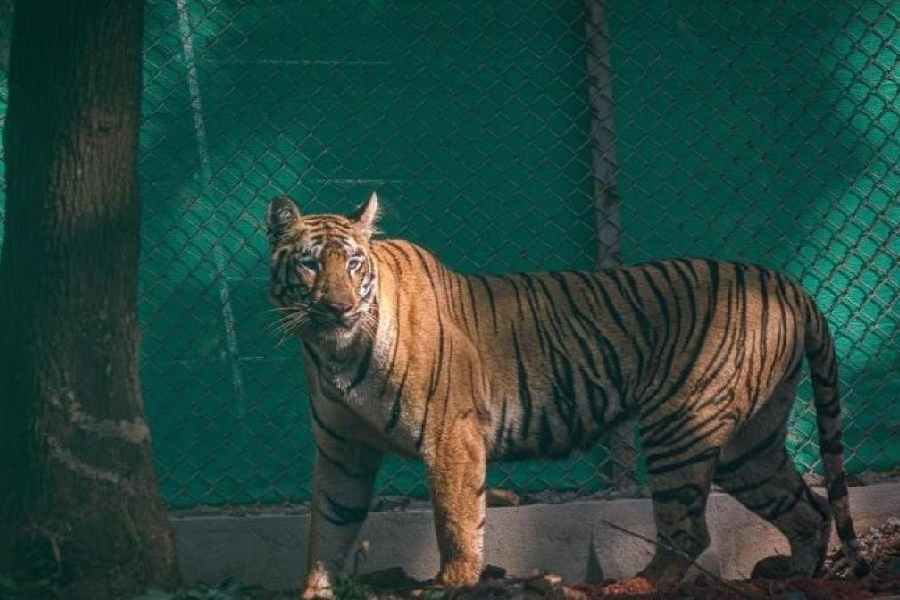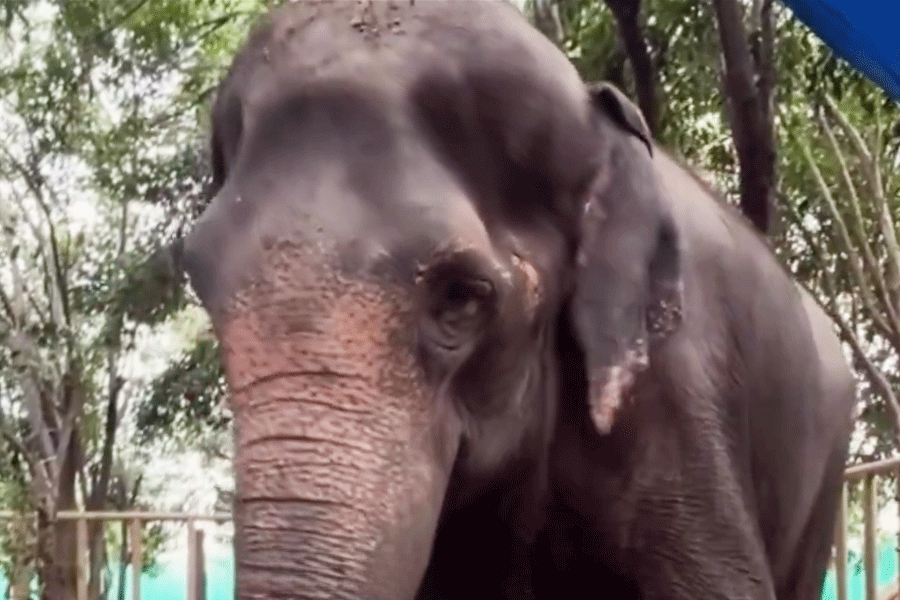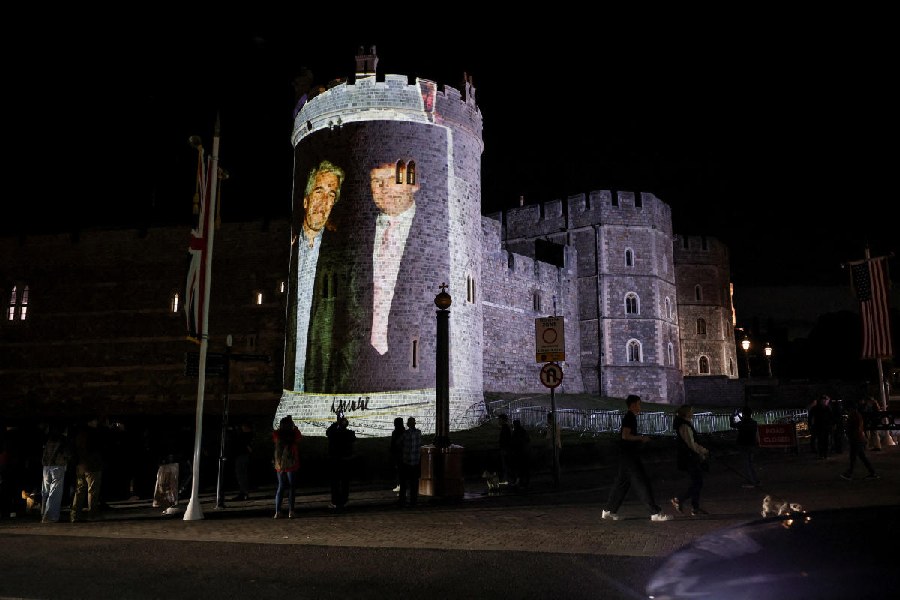 |
| Magadh Mahila College students perform at the workshop on Thursday. Picture by Nagendra Kumar Singh |
Patna, March 1: Academics, classical singers and dancers from at least five universities have come to Magadh Mahila College campus for a three-day-long national workshop sponsored by the University Grants Commission.
The workshop — Influence of Hindustani Classical Music on Rabindrasangeet — was inaugurated today. The music department of the college has organised the event in collaboration with Bharatiya Nritya Kala Mandir. The speakers at the three-day event have come from Rabindra Bharati University, Calcutta, Deen Dayal Upadhyay Gorakhpur University, Banaras Hindu University, Tilka Manjhi Bhagalpur University and Magadh University.
Sruti Bandyopadhyay, a teacher of dance at Rabindra Bharati University, C.L. Das, retired teacher, English, College of Commerce, and Sharbari Banerjee, teacher, art and aesthetics department, National Council of Educational Research and Training (NCERT) were among the speakers today. Sudipa Bose, teacher of Bharatnatyam at Bharatiya Nritya Kala Mandir, also performed on the inaugural day.
Krishna Dev Kalpit, director, Doordarshan, said Rabindrasangeet is not just influenced by Hindustani classical music but also by Carnatic music. “In Rabindrasangeet, Rabindranath Tagore has given special emphasis to the purity of ragas Rabindrasangeet’s popularity has crossed borders and even filmmakers from Poland use it in their films.”
C.L. Das said: “Pankaj Kumar Mallick, Jaganmay Mitra and Hemanta Kumar Mukhopadhyay are some of the Rabindrasangeet artistes, listening to whom I got to learn something about Rabindrasangeet.” He added that Tagore learnt dhrupad and khayal gayan in his childhood, which was later reflected in his compositions.
Sharbari Banerjee spoke on the on Tagore’s Gitabitan. She also said: “Rabindrasangeet is different because of its unique composition. A confluence of ragas play an important role in Rabindrasangeet’s uniqueness.”


